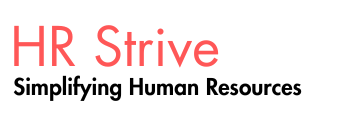Business and Competitive Awareness in HR
To drive meaningful impact, HR professionals must cultivate a strong understanding of how their organization generates value—and how both internal dynamics and external forces influence overall performance.
Linking Competency to Strategy
The Business Acumen competency empowers HR leaders to align talent strategies with the organization's business model and market position. When integrated with capabilities such as analytical thinking, consulting, and communication, this competency enables HR to deliver high-impact, strategic solutions.
Consider this scenario:
One business unit had a persistently high turnover rate compared to others, continuing for over a year. Rather than rushing to fix the symptoms, the HR team committed to uncovering the root causes. Leveraging their business acumen, they were able to ask insightful questions and interpret findings in a way that aligned with business realities.
-
One team member focused on researching the division’s products, services, competitors, industry-specific language, and current labor market conditions, including unemployment trends and relevant benchmarks.
-
Another reviewed exit interviews to identify recurring themes and concerns.
-
The HR manager conducted one-on-one discussions with selected team members to capture firsthand perspectives.
Once the data was consolidated, the team collaboratively analyzed potential causes and generated targeted solutions. Each recommendation was evaluated not only for its feasibility but also for how well it aligned with the company’s strategic goals and potential return on investment.
The HR Director then enriched the proposal with broader ideas—such as revising the employer brand and enhancing the onboarding experience—and made a compelling case to senior leadership for support.
Understanding Value in Context
"Value" in business is not one-size-fits-all. It represents an organization’s ability to fulfill its strategic mission—and this can differ based on industry, structure, and purpose. (Importantly, value should not be confused with values, which refer to organizational ethics and principles.)
Across all sectors, a central HR objective is to protect and grow the organization’s core assets—financial, human, technological, and physical. Strategic planning hinges on understanding how the organization defines value and identifying the activities that generate, sustain, or enhance it.
For instance:
-
A commercial enterprise might define value in terms of profitability and asset growth.
-
A defense or humanitarian organization may see value as achieving mission effectiveness.
Organizational culture, too, shapes perceptions of value. In post-merger environments, for example, differing definitions—one emphasizing shareholder returns, another focusing on employee well-being—can lead to internal friction. These differences may arise from national, ethnic, or departmental cultures. Operations may focus on output; sales, on customer satisfaction.
HR plays a vital role in navigating and reconciling these value-based differences—especially during strategic shifts, mergers, or restructuring. Through thoughtful guidance, HR helps bridge diverse perspectives and align stakeholders under a shared strategic direction.
The Value Chain and HR’s Strategic Role
An organization’s value chain maps the step-by-step processes involved in delivering its products or services to the customer. Each function—whether internal or external—adds incremental value, ultimately contributing to a greater whole. This chain is also referred to as the business model and encompasses everything from concept to delivery.
In global operations, global value chains involve multiple cross-border entities collaborating on different stages of production or service delivery. These networks go beyond outsourcing; they foster shared expertise and integrated development, despite challenges in governance and coordination.
Organizations can gain a competitive edge by excelling in specific links of this chain—such as innovation, marketing, or supply chain efficiency—or by ensuring seamless coordination across departments.
For HR, the primary contribution to the value chain lies in securing and developing pivotal talent pools—individuals with mission-critical capabilities that drive strategic outcomes. As highlighted by John Boudreau and Peter Ramstad, HR adds value by ensuring the right talent is in the right place at the right time.
-
HR protects value by managing workforce planning and labor supply to maintain productivity.
-
It enhances value by fostering leadership development, performance management, and succession planning.
-
It creates new value by sourcing and integrating emerging skills aligned with future business needs.
To improve service delivery and deepen alignment with internal stakeholders, HR may hold regular touchpoints with functional leaders. These engagements can lead to formal Service-Level Agreements (SLAs)—clear commitments around timelines, service standards, and communication expectations. For example, an SLA might specify how quickly HR will fill vacancies or respond to payroll discrepancies.

No comments:
Post a Comment